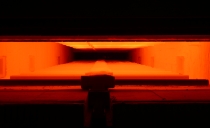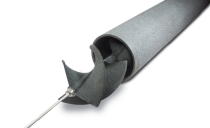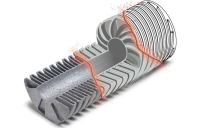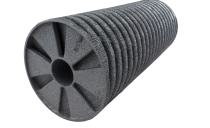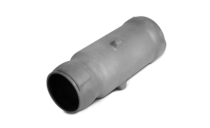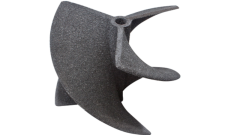
Direct & Indirect Heating Burner Solutions from Saint-Gobain
As an important process in many production lines, industrial heating continues to challenge producers in a wide array of industries, including steel and aluminium production, ceramic manufacturing, chemical processing, and glass making. As these producers look for ways to push their industrial heating processes to higher temperatures and outputs, they are faced with new challenges related to efficiency, throughput, emissions, and maintenance which could be managed through custom built solutions such as, Ceramic Single Ended Radiant Tubes, Ceramic Recuperators, Ceramic Burner Nozzles, Ceramic Flame Tubes, and performance enhancing Ceramic Radiant Tube Inserts for industrial heating applications. Industrial heating can be broken down into two main categories: direct and indirect heating.
Direct Heating
Direct fire, similar to what one might see with a gas stove-top or propane grill, directs the flame and combustion directly into the chamber where products are being processed. Because all of the energy is being transferred into the production chamber or furnace, direct heating processes are often seen as more efficient and capable of reaching higher temperatures. However, direct fire heating has the downside of introducing the products of combustion (CO2, H2O and potential amounts of CO, NOx, and sulfides). While some processes can tolerate these combustion products, many processes require a controlled atmosphere within the furnace and must rely on indirect heating.
Indirect Heating
Indirect heating is when heating fuel (i.e. natural gas, oil, etc.) is burned inside of a “heat exchanging element” (i.e. radiant tube, muffle, etc.), suspended within the furnace where product is being processed. The products of combustion are isolated from the atmosphere of the furnace. The energy released by this combustion must then be transferred, typically through a mixture of convection and radiation, from the heat exchanging element into the furnace chamber and product the furnace is processing. While this process decreases the overall efficiency of the process, it is necessary to control the furnaces’ atmosphere to ensure product quality.
Saint-Gobain & Industrial Heating
Saint-Gobain Performance Ceramics and Refractories offers a number of innovative solutions that help in both direct and indirect heating processes. For direct heating applications, Saint-Gobain Performance Ceramics & Refractories offers recuperators and burner nozzles that can be found in the following applications:
- Metal melting, refining, and casting
For indirect heating applications, Saint-Gobain’s offerings can be expanded to include radiant tubes, radiant tube inserts, flame tubes and diffusers, and exhaust-gas recirculation devices, in addition to recuperators and burner nozzles.
Some of the applications that make use of indirect heating are:
- Steel coating (i.e. galvanizing, aluminizing)
- Metal annealing and heat treatment
As an expert in the production and supply of high-quality ceramic products, Saint-Gobain can offer many benefits over competing alloy products used in the same applications, including:
- Higher application temperatures
- Better resistance to thermal wear
- Higher resistance towards chemically aggressive materials
- Lower maintenance costs
- Smaller weight and mass
And as one of the top 100 innovators worldwide with a core focus on customer centricity, we strive to deliver value through:
- Material knowledge and innovation
- Design & engineering
- 3D modeling & simulation
- Prototyping
- Manufacturing of complex shapes and geometries
Our Products and Solutions
Saint-Gobain Performance Ceramics & Refractories's Burner Solutions focus on Innovation through Sustainability and are committed to delivering our customers and partners savings and value by:
- Increasing their processes throughput
- Reducing their energy consumption
- Lessening their environmental impact
- Extending their component lifetime and reducing maintenance costs
Ceramic Radiant Tubes
Saint-Gobain’s radiant tube inserts can be easily retrofitted into existing radiant tubes to improve efficiency and bolster the amount of heat that the radiant tube is putting into the furnace chamber. By implementing these inserts, users can experience energy savings of up to 15% or throughput improvements of up to 5%. Available for simple installation in straight, U-type, W-type, and tri-type radiant tubes. Also applicable in P-type and double-P-type radiant tubes.
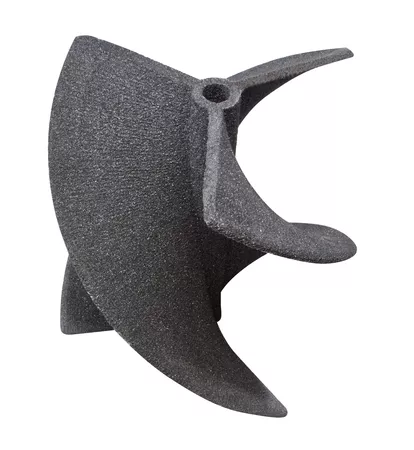
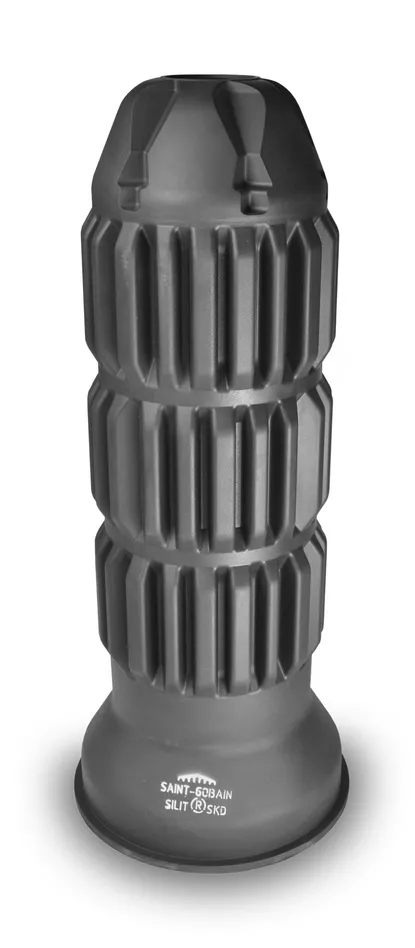
Saint-Gobain also possesses a heat exchanger technology, enabled by its AMASIC-3D® manufacturing platform that allows recuperators and burner systems to exceed 80% efficiencies. Known as HeatCor™, the unique twisted-channel design enables surface areas of up to 3x more than traditional recuperators that fit the same footprint.
Exhaust Gas Recirculation (NoxBuster®)
By inducing exhaust gas recirculation within the radiant tube, NOxBuster® reduces the generation of NOx emissions by up to 50%.
Related Content
Total Burner Solution for Energy Efficiency and Carbon Reduction
Discover Saint-Gobain Performance Ceramics & Refractories’ extensive range of total burner solutions for industrial heating applications.
SpyroCor and NOxBuster Radiant Tube Insert
Discover Saint-Gobain Performance Ceramics & Refractories’ range of radiant tube inserts – ideal for improving efficiency in the furnace chamber.
Amasic-3D Burner Nozzles
Discover Saint-Gobain Performance Ceramics & Refractories’ range of burner nozzles – ideal for guiding the flow of combustion.
HeatCor and Silit Recuperators
Discover Saint-Gobain Performance Ceramics & Refractories’ range of recuperators for integration into burner systems.
PyroCor and Silit Flame Tubes
Discover Saint-Gobain Performance Ceramics & Refractories’ range of flame tubes and diffusers – ideal for guiding the flow of combustion.
